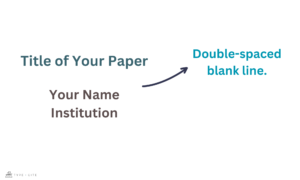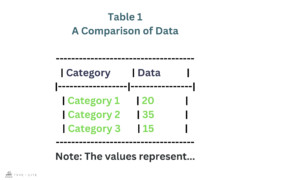How to Use Line Spacing in APA
- Tomas Elliott (Ph.D.)
- Published on 01/15/2024
- Updated on01/16/2024
In the APA format, it’s the norm to have double spacing in the entire paper. This includes the abstract, main text, block quotes, table and figure numbers, titles, notes, and the reference list, however, there are exceptions to this general rule.
Our APA citation tool is made to be easy and accurate. Whether you’re citing a book, referencing a webpage, or citing an APA journal, our versatile and efficient tool ensures accuracy. Furthermore, it assists in creating APA in-text citations, maintaining precision across your work.
TITLE PAGE CONSIDERATIONS
On the title page, a double-spaced blank line should be inserted between the title and the byline. In the case of professional papers, it is recommended to include at least one double-spaced blank line above the author note, bearing in mind that student papers do not incorporate author notes.

TABLES AND LINE SPACING
In APA Style, how you space the lines within tables can depend on the layout that works best for communicating information. The cells in the table body can be single-spaced, one-and-a-half-spaced, or double-spaced. It’s crucial to keep the spacing consistent within the table. Also, double-space the table number, title, and any notes that go along with it to ensure the table looks organized.
In this example, the body of the table, which contains the data, is single-spaced for simplicity.
FIGURES AND LINE SPACING
The words inside the image part of a figure can be single-spaced, one-and-a-half-spaced, or double-spaced, depending on what makes the information look best. It’s important to keep things consistent. The figure number, title, and notes should all be double-spaced.
 |
Navigating Appendices with Clarity: When including appendices in your document, maintain a clear and consistent approach to line spacing. Ensure that all elements within the appendices, such as titles, subtitles, and text, follow the general double-spacing rule. Consistency in formatting enhances the professionalism of your appendices and contributes to the overall coherence of your paper. Strategic Use of Line Spacing in Abstracts: While the general guideline is to double-space abstracts, consider the strategic use of line spacing to enhance the readability of key points. Utilize single-spacing or one-and-a-half spacing within specific sections of the abstract to draw attention to essential information. This nuanced approach can make your abstract more engaging and informative for readers. |
FOOTNOTES AND DISPLAYED EQUATIONS
Footnotes have a supportive role in providing additional information without cluttering the main text. They are usually single-spaced and slightly smaller than the main text.
When dealing with displayed equations, it’s recommended to use triple- or quadruple-spacing. This flexibility offers writers the chance to emphasize specific elements, contributing to enhanced clarity in mathematical or technical presentations.
Simplify your citation process with our MLA citation generator. Easily create MLA book citations, citations for MLA webpages, and references for MLA journals, all in line with MLA format guidelines. Boost your productivity by using our comprehensive tools, which also feature the Harvard referencing generator and citation generator.
GIVE YOUR CITATIONS A BOOST TODAY
Start your TypeCite Boost 3 day free trial today. Then just $4.99 per month to save your citations, organize in projects, and much more.
SIGN UP